| 3. Notes d’utilisation | ||
|---|---|---|

|
Annexe C. Tone Mapping and Shadow Recovery Using GIMP’s → |  |
Depending on your particular artistic intentions for an image, some images are more likely than others to benefit from being tone mapped using floating point Exposure operation. Your mileage may vary, but typically the procedure described on this page works best for photographs of scenes with a pronounced tonal difference between the highlights and shadows, as per typical sunny day “sky-ground” photographs.
For adding just one stop of positive exposure compensation, the procedure described on this page works really well. Depending on the image you might want to blur the mask using an edge-respecting blur algorithm, and/or tweak the mask using the Exposure operation, Curves, etc. But only modify the mask after using Auto Stretch Contrast on the mask. Otherwise results will be unpredictable: Gamma adjustments produce odd results when operating on out of gamut values, and Curves will summarily clip out of gamut values.
For adding more than one stop of exposure compensation, you can use one or more than one positive-exposure-compensation layers. Either way the layer mask(s) will need careful tweaking that’s very image-specific and also specific to your intended result. Figure 7 shows an example of using two exposure compensation layers to add two and a half stops of exposure compensation to the shadows and midtones of an image:
Utilisation des Niveaux virgule flottante illimitée plus des masques de calque pour ajouter deux diaphragmes de compensation d’exposition positive aux tons sombres et moyens de la photographie d’une camionnette de ramassage de pommes dans un verger prise par soleil éclatant.
Figure 7
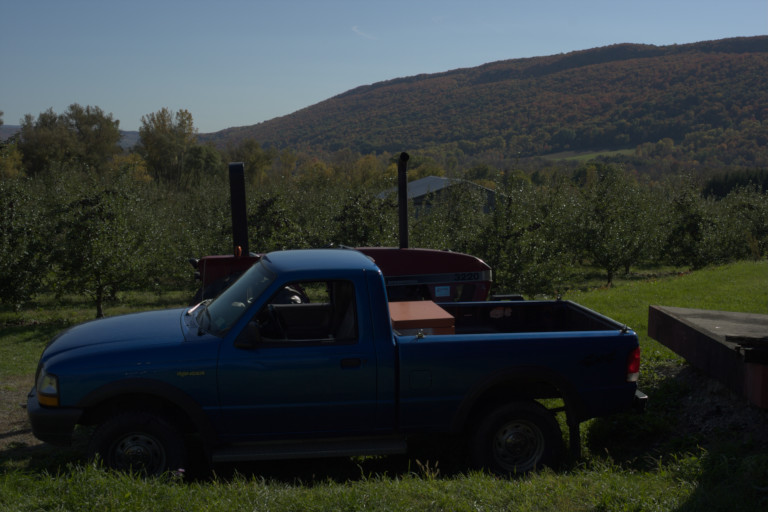
Image de l’appareil photo, sous-exposée pour éviter la disparition des détails dans les zones de lumière vive.
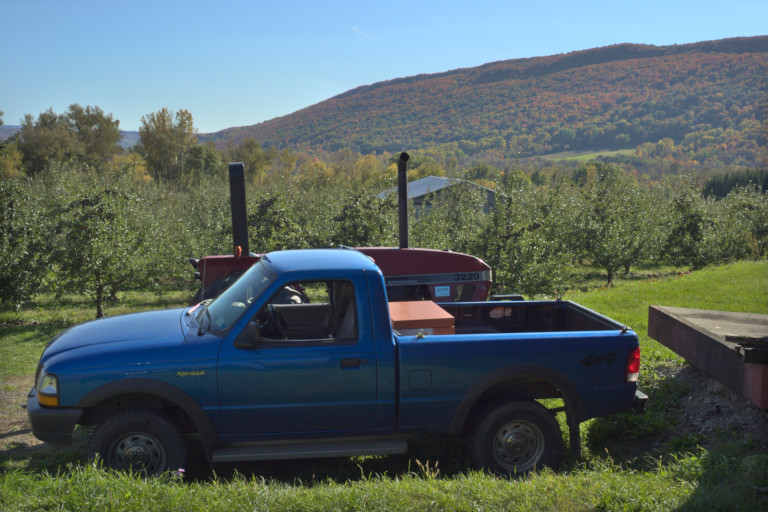
After tone mapping/shadow recovery using high bit depth GIMP's floating point Exposure operation.
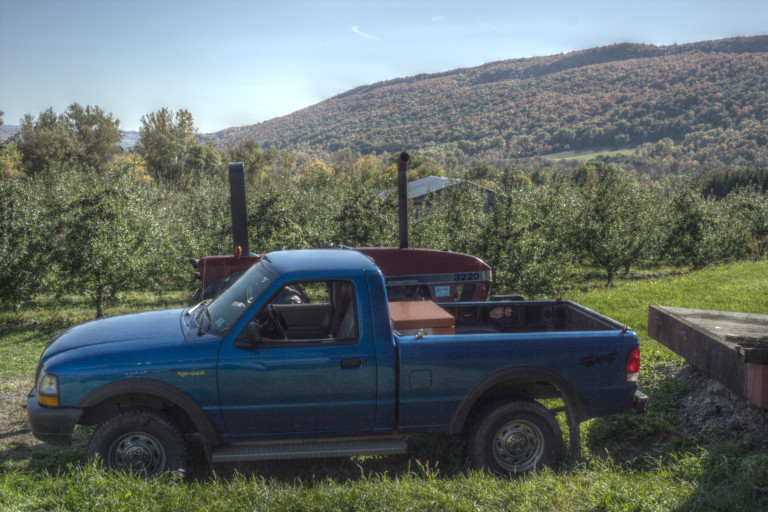
Pour comparaison, mappage Mantuik utilisant les paramètres par défaut de GEGL.
Using GIMP’s floating point Exposure operation plus layer masks to add two and a half stops of positive exposure compensation to the shadows and midtones of a “bright sun” photograph of an apple orchard truck.
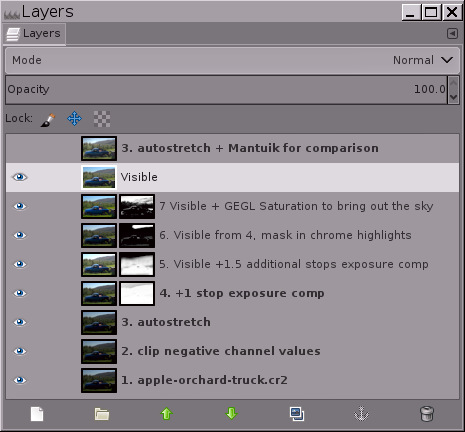
Capture d’écran de la pile de calques que j’ai utilisée pour le mappage tonal de la camionnette de ramassage de pommes. Le mappage tonal manuel vous donne une contrôle complet sur l’image résultante. Mantuik et d’autres algorithmes « automatiques et magiques » de mappage tonal sont fort consommateurs de ressources du microprocesseur, imprévisibles, et donnent souvent des résultats peu naturels.
Before using the Exposure operation to add positive exposure compensation, the base layer should already be stretched to its maximum dynamic range. The easiest way to stretch the base layer to its maximum dynamic range is to do → → and make sure that Keep colors is checked.
If you’ve never used an unbounded floating point image editor before, → → can produce an unexpected result: The image might actually end up with a severely reduced dynamic range, having either lighter shadows or darker highlights or both:
Before and after doing → → on the base layer, plus the final image after tone mapping using → :
Figure 8
1. Image provenant de l’appareil photo
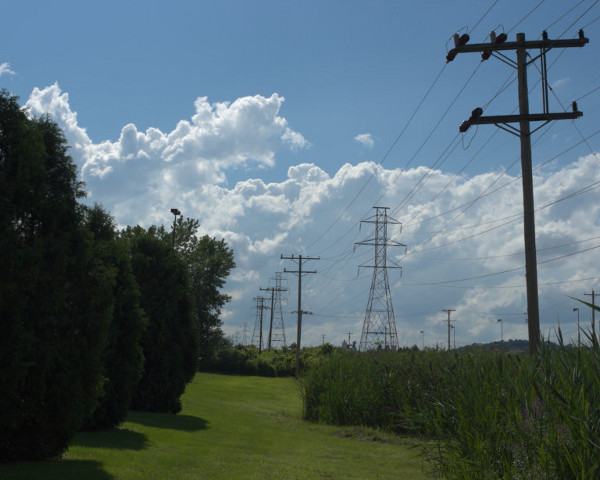
2. After doing → → .
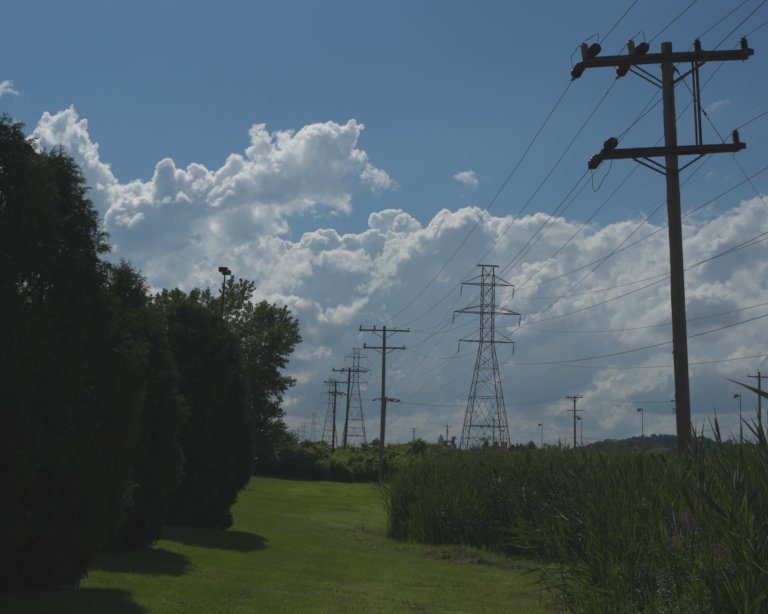
3. Image « Lignes électriques » finale.

This scene-referred interpolated raw file from the PhotoFlow raw processor (which provides a GIMP plug-in for easy opening of raw files) has out-of-display-range RGB channel values that will be brought back into the display range by doing → → .
After doing → → , shadows are lighter and highlights are darker because the dynamic range has been compressed to fit within the display range. This looks like an editing step in the wrong direction! but actually it’s necessary.
Voici l’image « Lignes électriques » après mappage tonal du fichier RAW en utilisant la procédure décrite dans ce didacticiel.
As captured by the raw file, this picture of power lines marching into the distance is a typical result of taking a photograph at noon on a bright sunny day: The sky and clouds looked pretty good right out of the camera, but the ground was far too dark. So the image could benefit from some tone mapping to raise the shadows and midtones. The first step is to select → → to bring any channel values that are less than 0.0f or greater than 1.0f back within the display range of 0.0 to 1.0 floating point.
Performing → → to bring the channel values back inside the display range doesn’t exactly look like an editing step in the right direction for tone-mapping this particular image! but really it is. Using → to add positive exposure compensation to the shadows and midtones won’t work if the image has channel values that fall outside the display range.
Dispensing with “useless” shadow and highlight information: Sometimes interpolated raw files of photographs of high dynamic range scenes end up with a sprinkling of highlight and shadow pixels that contains essentially no useful information. The easiest thing to do with such pixels is to use the Exposure operation to set the desired black and white points, and then clip the resulting out of gamut channel information.
Useless highlight information: For the “Power lines” picture shown in Figure 8 above, after applying → → , a measly 48 pixels occupied nearly half the tonal range (see the histogram to the right). A little investigation with GIMP’s Threshold tool revealed that all 48 pixels are the peak values of specular highlights on the ceramic insulators on the power line pole in the foreground.
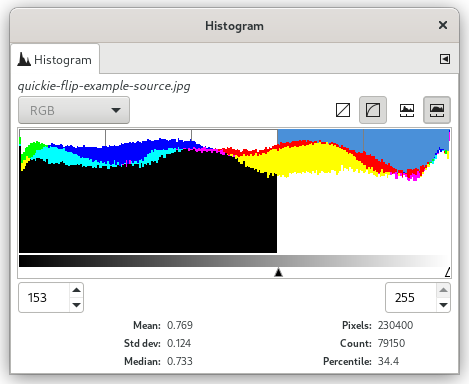
In cases where nearly half the histogram is occupied by a sprinkling of specular highlights, clipping the pixels is often the best and easiest solution. For the “Power lines” image, the 48 pixels in question carried essentially zero information. Use → to raise the white point, and then → to actually clip the channel information in the highlights (this time making sure the Clip high pixel values box was checked).
Useless shadow information: Some raw processors can output images with negative channel values. And previous edits using high bit depth GIMP might have produced negative channel values. If doing → → on your base image layer makes the image a whole lot lighter in the shadows, the problem is negative RGB channel values. One solution is to use → to move the black point to where you want it to be, and then clip the negative channel values. Here are two ways to clip negative channel values:
Use → , making sure to uncheck the Clip high pixel values box.
Ou alors créez un calque noir uni au dessus du calque d’image de base, réglez le mode de fusion sur « Éclaircir seulement », et créez un calque « Nouveau depuis le visible ».
Floutage du masque pour restaurer le micro contraste : Le fait de placer un masque inversé sur un calque qui est utilisé pour ajouter une compensation d’exposition positive aplatit nécessairement le micro contraste. Selon vos intentions artistiques concernant l’image, vous voudrez peut-être flouter le masque pour restaurer le micro contraste. Le problème est de flouter le masque sans introduire de « halos » autour du bord des objets dans l’image. Un flou gaussien de faible rayon produit un halo certes petit mais péniblement évident autour des bords sombres. Un grand rayon de flou peut parfois marcher mais tout aussi souvent produit un grand halo à la jonction des zones claires et des zones sombres de l’image. pour la plupart des images, une meilleure solution est de faire que le floutage du masque utilise un filtre respectant les bords comme le filtre d’adoucissement bilatéral G'MIC de GIMP :
Ajout d’une compensation d’exposition avec et sans l’adoucissement bilatéral du masque.
Figure 9
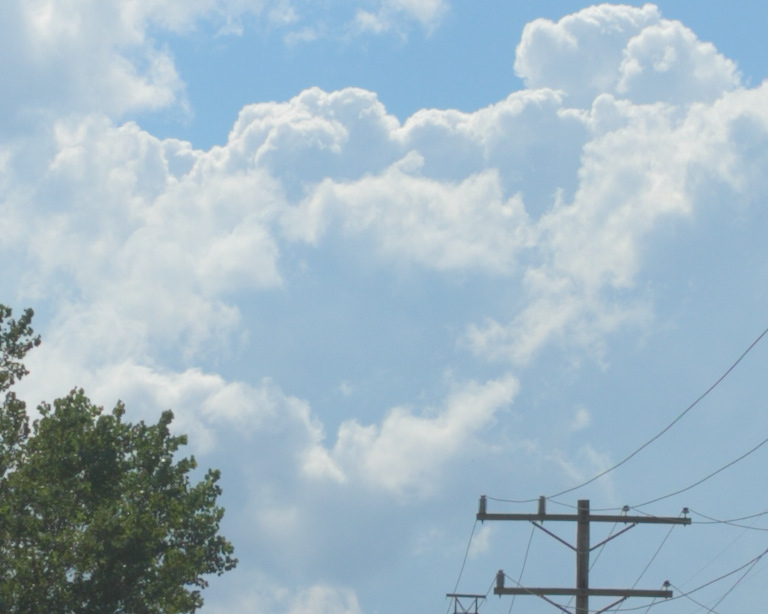
Sans application de l’adoucissement du masque, le micro contraste est aplati.
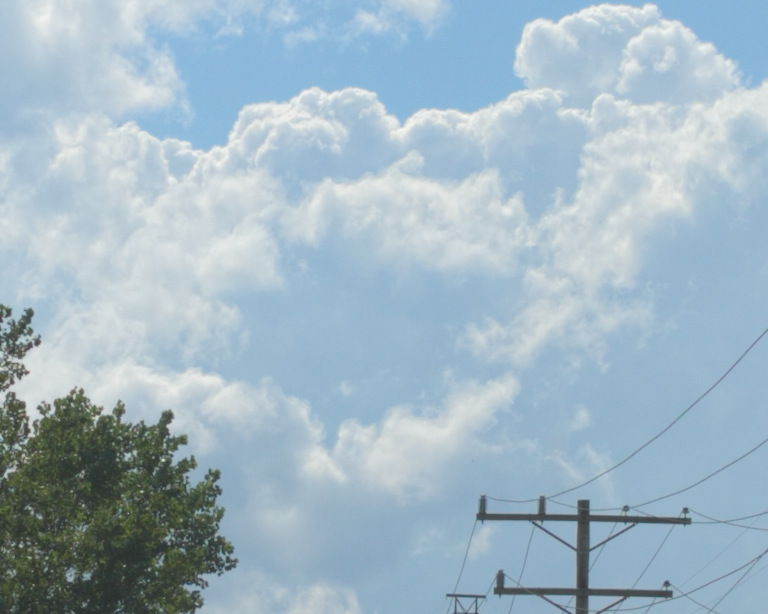
Après application de l’adoucissement bilatéral du masque, le micro contraste est restauré.
Adding exposure compensation combined with an inverse grayscale mask does flatten micro contrast, which might or might not be desirable depending on your artistic intentions for the image. To restore micro contrast, try using an edge-respecting blur such as G’MIC’s bilateral smoothing filter. GIMP G’MIC doesn’t work on layer masks. A workaround is to turn the unblurred mask into a selection, save the selection as a channel, and then drag the channel to the layer stack for blurring.
An essential component of the procedure for using the Exposure operation to add positive exposure compensation to images with dark shadows and midtones needs to be explicitly mentioned: Not only is the high bit depth GIMP’s Exposure operation unbounded at floating point precision — layer masks are also unbounded.
Si les masques en niveaux de gris inversé étaient sommairement élagués (comme c’est le cas lors d’une modification en précision entiers), la procédure décrite dans ce didacticiel ne fonctionnerait pas.